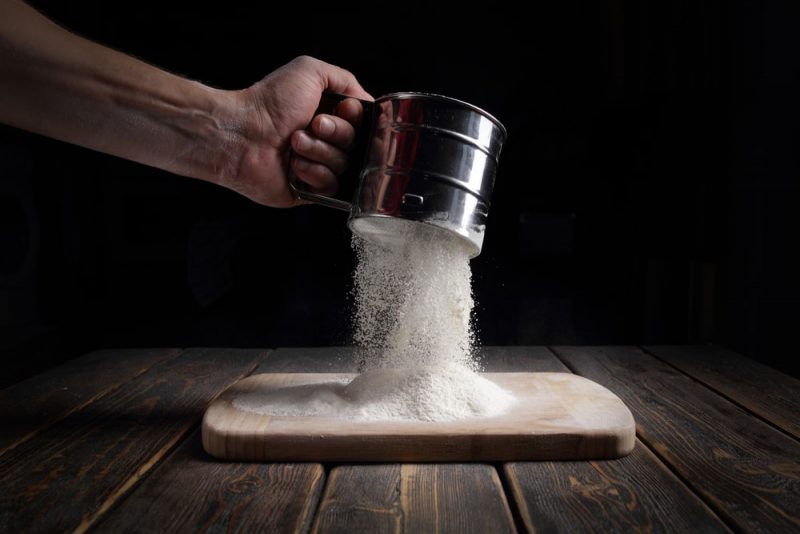[ad_1]
The sifting, screening, or sieve is a helpful separation method to separate two solid substances whose particles are of different sizes—for example, flour screening, wheat separation, and cement screening.
For this, we use a sieve, sifter, or strainer, a network of some resistant substance whose openings or pores allow the passage of solid matter with a smaller grain size and retain the largest particles.
It is a simple and widely used method to separate heterogeneous mixtures of solid compounds. Sieves can have various shapes, thicknesses and porosities.
Sieving Examples

- Flour sifting. In the kitchen the flour is usually sifted to aerate it, homogenize it, and thus prevent it from forming lumps once mixed with other substances.
- Mineral salt separation. To distinguish between salt of mineral origin and frequent residues of rock or other substances, a sieve retains most of the residues and allows the much finer salt to pass through.
- Removal of rocks from the ground. If dry soil passes through a sieve, it traps rocks and other debris, letting smaller soil particles pass instead.
- Popcorn salt. Popcorn tends to be rich in salt when we buy it at the movies. A solution to reduce the salt concentration is to shake the paper bag so that the salt falls through the small holes in the corners and the corn remains. In that case, the paper acts as a sieve.
- Sifting the rice. Often a strainer is used to sift rice or other grains just taken out of their bag, to separate the valuable grains from the stones, impurities and broken grains, which, being smaller, pass through the strainer, leaving what is desired inside.
- Wheat separation. In the wheat flour production process, it is sifted in various mills to separate it from the bran (the grain husk).
- Sand homogenization. This procedure is carried out in the construction sector to standardize the size of the sand particles, which can often agglutinate in larger structures. It is passed through a sieve so that all the sand is the same size.
- Sprinkling in pastry. Cinnamon, chocolate, and other frequent companions in baking are usually sifted through a strainer when spreading them on the surface of the dessert to allow a more homogeneous distribution and to prevent bulky residues.
- Composting. This method of recycling organic matter often benefits from simple screening to extract from the organic mixture reintroduced to the soil those plastic, metallic, or hard particles that could contaminate it. Organic matter is so ductile that it passes through the sieve, while rigid and large particle-size materials cannot.
- Salt and pepper shakers. The lid of these devices, which is perforated, operates like a sieve, retaining inside the container most of the material (salt or pepper), as well as possible lumps that have formed (some salt shakers are filled with rice to eliminate humidity inside), or simply slowing its flow to food.

- Sifting in mining. In obtaining gold and other precious metals, certain types of sieves are usually used to separate the precious mineral from sand or earth, usually previously moistened.
- Coffee making. To separate the grain from the remains of leaves, sticks, or other materials that accompany the coffee berry in its process, a form of sieve is used.
- Cleaning the cat’s litter box. It is done by means of a small rake-shaped sieve, which allows the sand to pass through but retains the animal’s feces.
- Cement screening. Since it is such a desiccant material, cement tends to pick up moisture from the environment and form small lumps like stones. It is then sifted before it is used to elaborate a construction mixture.
- Seed separation. In the seed industry, seeds must often be screened to distinguish from impurities added during processing and from animals that feed on them.
[ad_2]
